
Selecting the right dehumidifier is a minefield for many people as brands send out conflicting information trying to persuade consumers to buy. Do you need a desiccant dehumidifier or a compressor model? Our sales are fairly even between the two technologies which puts us in an unique situation to provide unbiased advice.
There are two types of dehumidifiers: desiccant and compressor. At Meaco, we manufacture and sell an equal amount of both types of technologies, so we are uniquely placed to give unbiased advice on which would be best for your needs. Both types of appliance will help prevent mould and damp by extracting water.
Because there are two different types of dehumidifier technology on the market, confusion comes when someone has to decide which one to buy. Below is a cut-and-keep guide to making the right choice.
Generally speaking, a compressor dehumidifier is suitable for a room with an air temperature above 10°C, and a desiccant dehumidifier is more suited for temperatures below 10°C.
So, there are 6 key factors which may help you decide whether a desiccant or compressor dehumidifier suits you best:
- What is the temperature of the space you want to use your dehumidifier?
- Will a dehumidifier keep the room warm and dry?
- Can a dehumidifier dry laundry?
- How much does a dehumidifier weigh and how easy is it to move around?
- How much does a dehumidifier cost to run?
- And how much noise does a dehumidifier generate?
Compressor dehumidifiers are the established way of doing things having been around for 50+ years. They work by creating a cold surface and when the warm, damp air from within the room comes into contact with the cold surface, condensation forms, and the water is removed from the air. Jump to the comparison table.
A desiccant dehumidifier has no compressor and does not use a cold surface to extract the excess moisture from the air. Instead, it has a desiccant wheel that absorbs the moisture from the air, in a similar way to a sponge. The desiccant is regenerated by an internal heater and fan so that the process can be repeated time and time again. Jump to the comparison table.
Main applications to consider when choosing between dehumidifier types:
Which type of dehumidifier is best for cold or cooler conditions (temperature is below 10°C)? When the room air temperature is likely to fall below 10°C, for example in a conservatory, garage or colder home, a desiccant dehumidifier is the most suitable type. This is because, desiccant dehumidifiers maintain a consistent performance, regardless of the surrounding temperature.
Compressor dehumidifiers, on the other hand, need the inside of the machine to be colder than the air within the room in order for it to perform correctly. So, the colder the room, the harder the dehumidifier has to work to create that cold surface. As the temperature starts to fall down towards 10°C, the chances are that the inside of the dehumidifier will get close to freezing, increasing the chances of ice forming on the dehumidifier’s cooling coils. Below 10°C, compressor dehumidifiers are programmed to spend more and more of their time defrosting themselves rather than dehumidifying.
Pictured: Desiccant dehumidifiers are recommended for cold rooms although the MeacoDry Arete® One compressor dehumidifier also works well.
As a rule of thumb we would always recommend a desiccant dehumidifier if the room temperature is below 10°C, a desiccant dehumidifier or a large compressor dehumidifier (either a 20L or 25L) if the room temperature is between 10°C and 15°C and any type of dehumidifier, including a small compressor dehumidifier (10L or 12L), if the room temperature is above 15°C.
Below 10°C: desiccant dehumidifier only
Between 10°C and 15°C: desiccant dehumidifier or a large compressor dehumidifier (20L or 25L)
Above 15°C: desiccant dehumidifier or any size compressor dehumidifier (10L, 12L, 20L or 25L)
Small compressor dehumidifiers used in rooms below 15°C and large compressor dehumidifiers used in rooms below 10°C will not perform well. Having said that, you will see that both of the larger MeacoDry Arete® One dehumidifiers are Which? Best Buys and in their reviews found that they both performed better than expected at 10°C and that the 25L model was exceptional. Desiccant dehumidifiers (such as the Meaco DD8L) will perform the same regardless of the room temperature.
Desiccant dehumidifiers are recommended for cold rooms although the Arete® One 20L and 25L compressor dehumidifiers also work well, as you can see here in the classic car garage.

Which type of dehumidifier is best to keep your house warm and dry?
Most customers are looking for a dehumidifier to keep their home condensation free. Or to tackle the problem of too much humidity in the air causing damp and mould. They need a dehumidifier that will take excess moisture out of the air, and some also like it to warm up the room where it’s operating.
Both compressor and desiccant dehumidifiers will warm the air up slightly – the air naturally warms up as it passes through the dehumidifier. The air coming out of the compressor dehumidifier will be about 2°C warmer. This will not warm up the room the dehumidifier is being used in (and will actually feel cold to touch! This is because the air is moving). However,the air coming out of a desiccant dehumidifier will be about 10-12°C warmer and will have a significant impact on the temperature of the room its being used in – think of it as a 2 in 1 dehumidifier and heater!
So, if you are putting the dehumidifier into a hallway that is on the chilly side, the desiccant dehumidifier makes sense. If the hallway is already nice and toasty then the compressor dehumidifier is the correct option.
So, for a cold room – the winner is desiccant. For a warm room – the winner is compressor.
Is a desiccant dehumidifier good for drying laundry?
Drying washing indoors is one of the most common reasons why homes suffer from condensation, damp and mould. Laundry dries because the air around it is drier than itself. So the washing gives up the moisture in order to be in equilibrium with its surroundings. However, the moisture from the laundry has to go somewhere and this leads to condensation, damp and mould. Using a dehumidifier not only creates a dry atmosphere and blows air across the wet washing speeding up its drying time, it also captures the excess moisture from the clothes and prevents it from causing problems in your house such as condensation, damp or mould.
Drying washing using a dehumidifier works in the same way as drying the laundry on a line in the summer – honest! The laundry dries fastest outside on a dry, warm, windy day. And the laundry inside will dry faster if the warm, dry air created by the dehumidifier hits the clothes.
Both desiccant and compressor dehumidifiers are good at drying laundry. A desiccant dehumidifier tends to have a larger top speed air flow than a compressor dehumidifier and the air coming out of the dehumidifier is warmer (giving it that extra edge).
The DD8L Zambezi has a unique low energy drying cycle for laundry which makes it the best desiccant for drying laundry, as well as a lourve which directs the airflow onto the clothes. Although compressor dehumidifiers don’t have the additional heat they are cheaper to run and therefore can dry a load of laundry at less of a cost than a desiccant. Many compress dehumidifiers, including our MeacoDry Arete® One range, have dedicated laundry modes to dry your laundry in 6 hours.
For drying washing, the winners are the DD8L Zambezi and for low cost drying the MeacoDry Arete® One range.
Pictured: Desiccant dehumidifiers can be used to dry washing cost-effectively.
Product features to consider before purchasing:
Planning on moving the dehumidifier around the house? You’ll need to know which weighs less, a desiccant or compressor dehumidifier.
However, there may be times when you want to move the dehumidifier around. For example, you might have built-in wardrobes in a bedroom that are prone to mould growth. You might have the dehumidifier upstairs on the landing but need to move it downstairs to dry the washing, or you might like to move it into a conservatory now and again or use it to dry out a poorly ventilated bathroom.
Compressors add about 6 kilograms to the weight of a dehumidifier, so carrying a desiccant dehumidifier around is a lot easier than carrying a compressor dehumidifier around. However, most compressor dehumidifiers come with castors, making them more portable.
Carrying your dehumidifier – the winner is desiccant.
Energy Consumption – how much does a dehumidifier cost to run?
Customers are understandably interested in how much it costs to run a dehumidifier. Compressor dehumidifiers are in general cheaper to run. However, a desiccant releases its extra energy as heat. So there will be a cost to run your dehumidifier, but you are getting heat back into your home, meaning you can reduce your central heating accordingly. And that has a positive knock-on effect on your bills. You have to decide if you want or need this additional warmth or if you just want the cheapest dehumidifier to run.
For example, in our compressor range, we have the Meaco Low Energy 12L Dehumidifier, running at just 4p / kWh as well as our MeacoDry ABC 12L, running at just 4p / hour based on 26.35p / kWh. That means, you can have the dehumidifier on 24 hours a day, maintaining your home humidity levels for just 96p per day.
So, for low energy and low cost operation – the winner is compressor dehumidifiers.
The good thing is, whichever dehumidifier you choose, a compressor or a desiccant, the dehumidifier will be removing cold, damp air from your home, meaning you don’t have to put your heating on as high – saving you money on your energy bills!
Noise levels – how much noise does a dehumidifier make?
This is an area where dehumidifiers have changed a lot over the past 5-10 years. It used to be the case that a desiccant dehumidifier on low fan speed was your quietest option, but a few years ago the MeacoDry ABC Range changed all of that with 10 and 12l models at just 36dB (close to the sound of a whisper). And then, we changed it again with the new Arete® One 10 and 12L compressor dehumidifiers which are even quieter at 35dB. So you can now buy a dehumidifier that is the quietest and cheapest to run.
For quiet operation, the winner is Meaco ABC 10L and 12L and MeacoDry Arete® One 10 and 12L Dehumidifier and Air Purifier. These dehumidifiers are all a whisper-quiet 35/36dB.
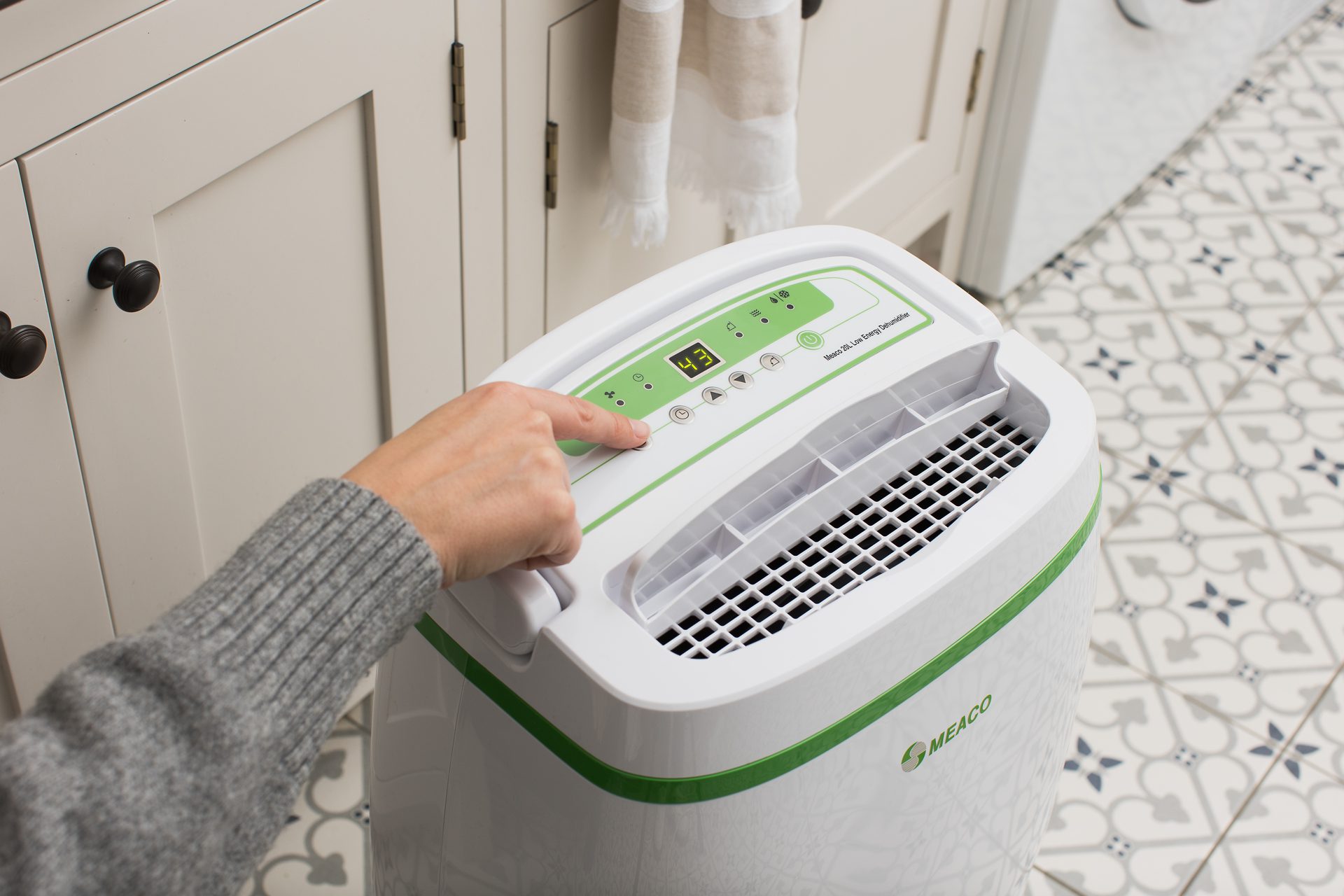
Which Dehumidifiers Can Do More Than Just Extract Moisture, Which Can Double Up As An Air Purifier As Well?
Many dehumidifiers can now be fitted with HEPA filters so they can purify the intake air as well as extracting moisture. At Meaco, we supply medical-grade H13 HEPA filters to selected compressor dehumidifiers. These can retain 99.75% particles as small as 0.3 micrometers in diameter, making it great for people with allergies like hayfever or other respiratory medical conditions such as asthma.
Because of the heat elements and sensitive parts of a desiccant dehumidifier, we do not supply things like HEPA filters. By putting anything which reduces the air intake onto the dehumidifier, we’re reducing its efficiency and can harm the machine. Equally, if things like sawdust from a garage/workshop got into the mechanics, you could be serving a short life sentence for your dehumidifier.
However, compressor dehumidifiers like the MeacoDry Arete® One and Meaco Low Energy range, are supplied with a H13 HEPA filter. It can be easily inserted into the dehumidifier turning it into a combined dehumidifier and air purifier. You can use this as much or as little as you want – the filter doesn’t have to be in the unit all the time, however when it is, the air in your home is being purified of dust, dirt, allergens, mould spores and VOCs! It’s important HEPA filters are replaced when they change colour from white to dark grey, this tends to be around every 3 months.
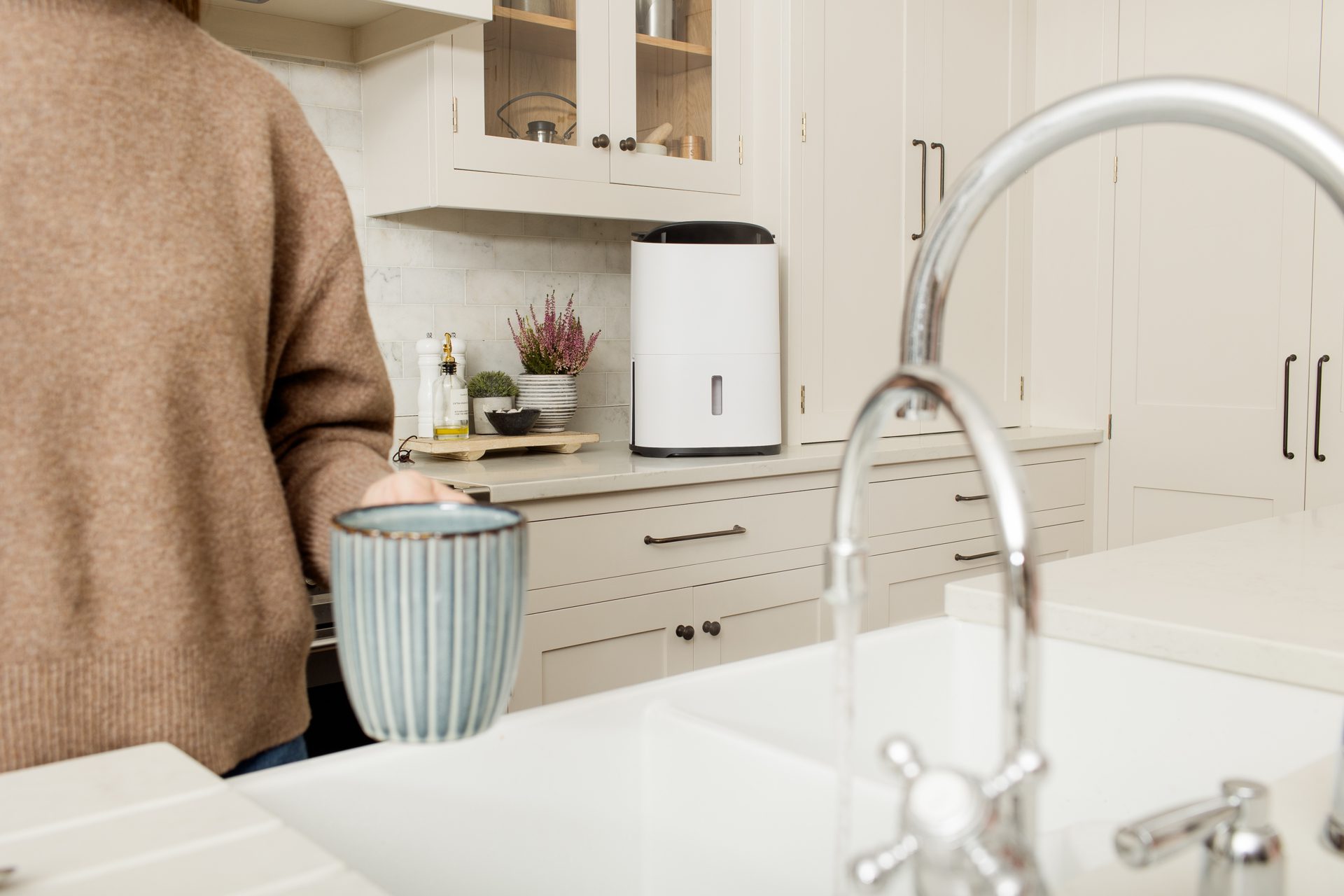
Let’s summarise the desiccants vs compressor dehumidifier debate, each is useful in different applications:
Desiccant
Compressor
Effective in which temperatures:
Desiccant:
Works well in all temperatures and are the recommend dehumidifier below 10°C
Compressor:
Only effective in spaces over 10°C, performs best at 16°C and above
Does it provide heat to the room?
Desiccant:
Yes, desiccants emit some additional warmth which can be useful
Compressor:
No, this does not provide additional heat
Are they effective when drying washing?
Desiccant:
Yes, actually optimal as they extract moisture and add warmth to drying laundry
Compressor:
Yes, these will successfully help you to dry washing indoors
Laundry mode available?
Desiccant:
Most Meaco dehumidifiers come with Laundry Modes. Check the technical specifications for more information.
Compressor:
Most Meaco dehumidifiers come with Laundry Modes. Check the technical specifications for more information.
Which is lighter in weight?
Desiccant:
Lightest and therefore easiest to move
Compressor:
The equivalent sized compressor dehumidifier will weigh an additional 6kg, however lots come with castors
Which has a cheaper cost to run?
Desiccant:
Desiccants are more expensive to run, our MeacoDry DD8L costs 9p / kWh
Compressor:
Compressors are cheaper as a general rule. Our MeacoDry Arete® One 10L costs just 4p / kWh
Which dehumidifier uses less electricity?
Desiccant:
Around 330 watts at 20°C and 60%rh
Compressor:
Between 150-260 watts depending on the size at 20°C and 60%rh
Which generates the lowest noise levels?
Desiccant:
Traditionally quieter, the 8L desiccants in our range are 39 dB
Compressor:
The latest ABC and Arete® dehumidifiers are Quiet Mark accredited, measuring 35dB and above.
Which has the longest lifespan?
Desiccant:
Lifespan is dependent on a lot of factors including the environment and how well the dehumidifier is looked after
Compressor:
Lifespan is dependent on a lot of factors including the environment and how well the compressor is looked after, however, our Arete® range is the only range to come with a free 5 year warranty
Which has the best sizing options?
Desiccant:
Because of the mechanics, desiccants only come in 8L however this is suitable from a 1 bed flat to a 5 bed house
Compressor:
Multiple sizes available for different sized houses
Which can clean the air as well as dehumidify?
Desiccant:
Dehumidify only
Compressor:
Our MeacoDry Arete® One and Meaco Low Energy range are combined dehumidifiers and air purifiers
Best application
Desiccant:
Lower temperatures or places you may want some extra warmth. For example, an unheated conservatory.
Compressor:
Applications over 10C. These are cheaper to run and available in more sizes. Great for home living.
You can see that it is not as simple as many dehumidifier brands make out when they claim that a desiccant dehumidifier – or a compressor dehumidifier is best. This is because they are normally biased towards one or other of the technologies. Hopefully the above will help – but if you are still not sure what’s best for you, give us a call on 01483 234900, email customerservice@meaco.com or comment below and we will be happy to talk it through with you.
Browse our ranges: Compressor Dehumidifiers, Desiccant Dehumidifiers
Products featured: Meaco ABC 12L , Arete® One 10 and 12L Dehumidifier and Air Purifier, Meaco DD8L, Meaco DD8L Zambezi, Meaco Low Energy Dehumidifier 12L


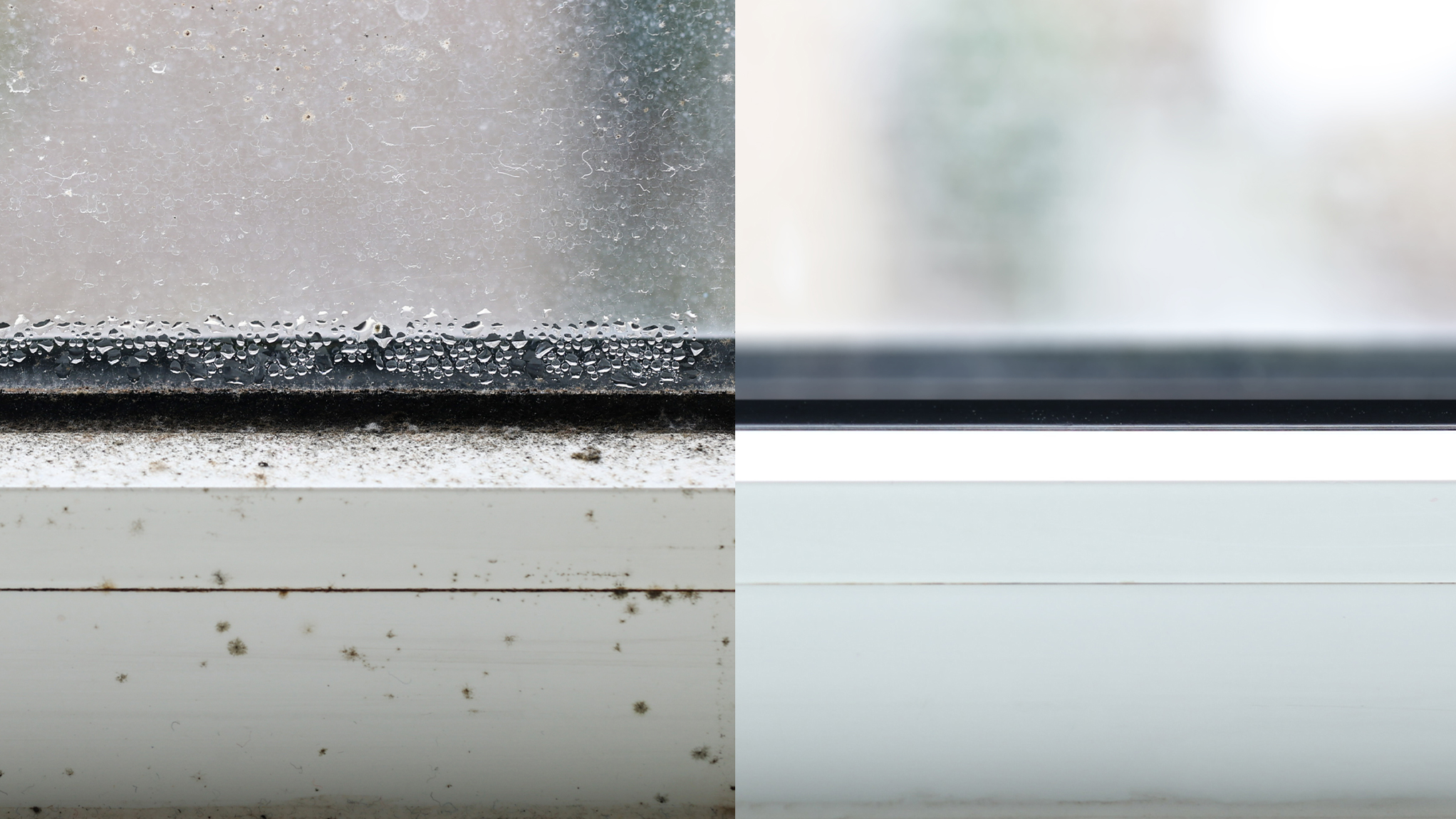

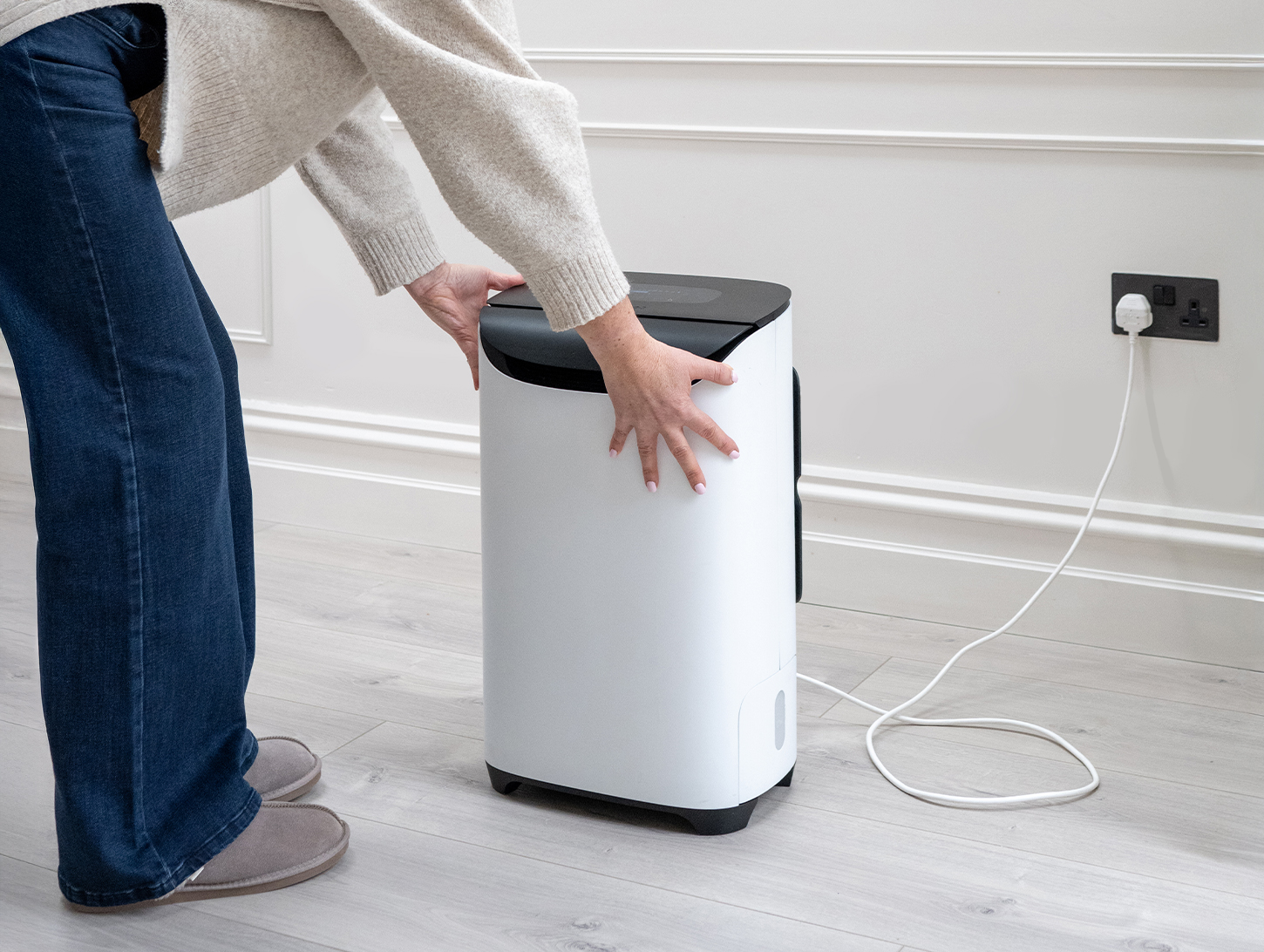

252 responses
What is the difference between the new dd8l Pro dessicated dehumidifier v the zambezi model? Which is superior? Thanks
Thank you for your question regarding our dehumidifiers. Both the Meaco DD8L Pro and Meaco DD8L Zambezi are great desiccant dehumidifiers. They share many of the same functions such as an automatic louvre and laundry mode. And they are similar in their noise levels and approximate electricity costs. Deciding between the two depends on what features you are looking for and what you will be mostly using the unit for.
The DD8L Pro is our first desiccant dehumidifier to be compatible with our Meaco App. It also has the sleek LCD ‘Chase’ display, a night mode option and the antibacterial sterilising ioniser with a dust filter.
The Zambezi has a clear digital display, an antibacterial filter and ioniser. It is slightly lighter and has a larger tank size than the DD8L Pro.
To read on more on both products, please visit our website using the below links:
Meaco DD8L Pro Desiccant Dehumidifier
Meaco DD8L Zambezi Dehumidifier
I’m excited by your upcoming Meaco DD8L Pro Desiccant Dehumidifier. I want the app control! However, I realise that the lowest temperature it’s going to be called to work on is 19 degrees, but mostly in the twenties. The dehumidifier is going to sit in the hall outside an internal bathroom, with weak shower fan extraction flow. So it’s in the crucible! I simply need the best machine for the job.
Would an Arete 2 with 12 litres of extraction achieve that 50% more extraction than the DD8L 8 litres?
I already have a ‘dumb’ DD8L I’d be looking to sell, so it’s important I don’t take a step down. I’d love an app, but I also want to see it do better at keeping up with billows of shower steam. I’m drawn to the 12 litre Arete 2, not 25 litre, because of the quieter fan speeds but most crucially thinness – 23cm deep not 27cm.
Sam,
Thank you for your enquiry.
Given that your temperatures will mostly be in the twenties, with a minimum around 19°C, a compressor dehumidifier like the Arete is generally more efficient, costing marginally less to run than a desiccant model. That said, if running cost isn’t a concern, you can absolutely continue using a desiccant model like the DD8L.
In terms of extraction, the Arete and the DD8L will give broadly similar results. Since you’ve already been using the DD8L and it’s been handling the space well, you could continue with the current range. If you want to try the Arete, then yes it would also work effectively. The decision really comes down to your preference and priorities.
Best,
Omar@Meaco
I’ll benefit from the more powerful, which I presume is Arete 2 with a claimed 12 litres extraction, if that value is valid at 20 degrees vs. the DB8L’s 8 litres, then Arete gives a substantial improvement. One of the hesitations now is, you have a very nice stone colour Arete 1. Are you about to release that for the Arete 2? Because It looks SO much better than black and white. How long would I have to wait?
How much power and cost will the zambezi model use when it’s idle and checking every 30 mins or so to keep RH levels consistent? Or is it better to switch off during periods rather than leave it on 24h?
Also do you only offer 3years warranty on zambezi purchasing direct from your website, compared to 2y from other retailers?
A,
Thank you for your enquiry. When the Zambezi is on standby, it uses very little power, similar to most household appliances like TVs when left on standby. When it runs briefly to check humidity, it only uses the fan, around 30 watts, until the heater activates, at which point energy use matches the figures listed on our website.
It’s generally best to leave the machine on and let it manage humidity automatically. You set your desired level, and it will run as needed to maintain it, so there’s no need to switch it off and on manually.
Our Zambezi models come with a 2-year warranty.
I hope that helps,
Omar@Meaco.
What is the difference between Arête one and Arête two dehumidifiers
Anne,
Thank you for your enquiry. The main differences are that the AreteTwo has a range of upgrades, a clearer display, app and voice control, a quieter and more efficient motor, and extra features to help with laundry drying and airflow. For a full breakdown of all the details, you can find everything on the product page.
I hope that helps,
Omar@Meaco
We have a bedroom home with a bad problem of damp in the bathroom/shower. The ceiling above the shower is turning black alrhough we have a fitted extractor fan. Moisture level seems very high., running down the walls and on the cistern. Tried opening the window after a shower or bath to no avail. What model and size would you recommend please?
Jenny,
Please let me know the average temperature of your home, how many bedrooms and how many people live there? Do you air dry your laundry or use a tumble dryer? Is the only problem in that one bathroom?
Chris
I live in a 2 bedroom bungalow, bedrooms 16 to 18 degrees, rest of rooms low 20s
I have just ordered your 10 compressor, have I ordered the correct one?
Jane,
Thank you for your purchase. Yes, a 10L compressor dehumidifier is suitable for your home’s temperature and size. It should work effectively in your 2-bedroom bungalow.
If you have any other questions or need further assistance, feel free to reach out!
Omar@Meaco.
Podrían decirme quién vende su producto en España o si lo envían?
Cesar,
Thank you for your question, please note, we do not have any stockists available in Spain, you may be able to check with a local Costco for possibly, some fan models.
Kind regards,
Omar@Meaco.
I have bought an old cottage which has no heating and is cold and very damp. The research I have done suggests a desiccant dehumidifier but (disappointingly) they have a much reduced rate of extraction when compared to the arête 25l model for example.
I was planning on going for the arête one or two 25l model but looks like I’d be wasting my time in a cold house. Is this definitely the case?
Many thanks,
Colin.
Colin,
Thank you for your question. Generally speaking, a compressor dehumidifier is suitable for space whereby the air temperature is more often above 10°C, and a desiccant dehumidifier is more suited for temperatures below 10°C.
As a rule of thumb:
Below 10°C: desiccant dehumidifier only
10°C and 15°C: desiccant dehumidifier or a large compressor dehumidifier (20L or 25L)
Above 15°C: desiccant dehumidifier or any size compressor dehumidifier (10L, 12L, 20L or 25L)
I hope this helps.
Omar@Meaco.
Omar,
if that is the case why do 10l and 12l compressor models state operating range down to 5c?
rather misleading..
Hi David,
10L and 12L Compressor dehumidifiers can operate down to 5 degrees (so it is technically correct) but they will not operate efficiently and therefore we wouldn’t recommend them in those temperatures. We always advise customers as per Omars response.
Thanks,
Siobhan
Hi,
I live in a 2 bedroom flat and mould is a common issue in winter. We don’t have central heating system, we use storage heaters. We don’t turn on the heater regularly in second bedroom which is not used often. Also we find it difficult to maintain the temperature above 15. Can you please suggest which type of dehumidifier is best in my case.
Vinitha,
Thank you for your enquiry. One of the difficulties that people have about buying a dehumidifier is matching up the best dehumidifier to the size and needs of their home. For a two bedroom house, a small to medium size dehumidifier, typically a 8L desiccant or either a 10L / 12L compressor dehumidifier will be the right size.
However in your case, it seems your temperatures are on the colder side, therefore please consider the below when selecting a unit:
As a rule of thumb:
Below 10°C: desiccant DD8L dehumidifiers only.
10°C and 15°C: desiccant dehumidifier or a large compressor dehumidifier (20L or 25L)
Above 15°C: desiccant dehumidifier or any size compressor dehumidifier (10L, 12L, 20L or 25L)
I hope that helps,
Omar@Meaco.
From Sarah,
I live in a one bedroom flat in london which can get quite cold in winter, I use a water distiller to dry my clothes as I don’t use central heating which is probable cause of mould & condensation in my home & my kitchen is literally 4sq metres. I think I suffer from allergies from mould in winter months & rooms are quite cold. I also have silverfish in my home & on researching I found information on using a dehumdifier prior to using anything else. I do suffer from the cold & though the compressor would be the ideal one I also think the dessicant one would be better as the cold is difficult to handle & my concern is if I was to choose the desicant dehumdifier, will using it 4 hours daily be sufficient to deal with the damp & mould issues or do I need to use it for a minimum 8 hours to achieve better results ?
Sarah,
Thank you for contacting Meaco for your dehumidifier enquiry.
All information and signs indicate that you should be using a DD8L (a desiccant dehumidifier). You will have the benefit of tackling the high humidity levels, preventing the mould from growing worse and have the benefit for the warm air coming out of the unit.
It would be best to leave the machine switched on, with the Meaco control logic, the machine itself, will turn off when the relative humidity is at your set target, it will then, in 30 minute increments, generate air flow to read the humidity in case there has been an increase for it to start extracting again, otherwise, back to sleep!
It takes a while to dry a house out, there is the moisture in the air, the moisture you add everyday and the moisture that is now being released by the furniture, books, walls and paper products every day. Expect things to settle down after about 6 weeks.
If you have not had a dehumidifier in the house before then expect it to run hard for the first month to dry the house out and then spend lots of time in stand-by. The more you control the amount of moisture that you put into the air each day the less the dehumidifier will run.
We have x3 models of the DD8L, two of which also offer air purification being built in anti-bacterial filters, these models are the DD8L and the DD8L Zambezi (it works better on the Zambezi) you can read more about this on our website. If you wished to follow up and discuss further, simply give us a call.
Kind regards,
Omar@Meaco